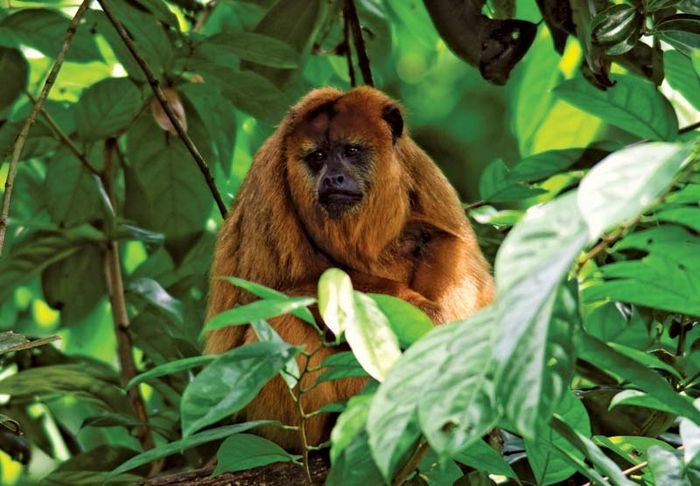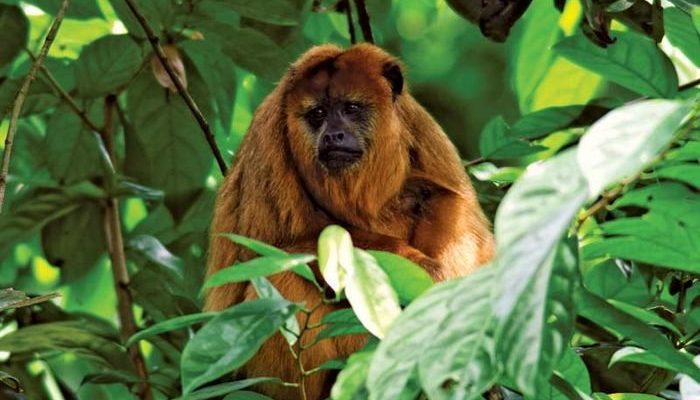
Imagine standing in a dense forest, surrounded by the sounds of nature, and then suddenly, a howler monkey’s call breaks the tranquility. It’s both eerie and enchanting. However, the very habitats that provide this backdrop are under threat, and the howler monkey’s future hangs in the balance. Understanding whether these monkeys are endangered requires examining various factors, including habitat loss, conservation efforts, and the overall ecosystem’s health.
Understanding Howler Monkeys: An Overview
Howler monkeys are part of the Alouatta genus and are known for their distinctive vocalizations, which play a crucial role in their social structure. There are several species of howler monkeys, including the black howler, mantled howler, and the brown howler. They are primarily found in dense forests, where they thrive on a diet of leaves, fruits, and flowers.
Visually, howler monkeys are quite striking. They have prehensile tails, allowing them to swing gracefully between branches. Their fur can range from black to brownish hues, often with a lighter underbelly. These monkeys are not just beautiful to observe; they also contribute significantly to their ecosystem by dispersing seeds and maintaining plant diversity.
Sadly, their future is uncertain. With increasing development and deforestation, howler monkeys are losing their homes. The emotional connection we feel to these animals often stems from their vocalizations, which express a range of emotions, from warning calls to those used in mating rituals. Losing them from the forests would not only diminish biodiversity but also rob us of their unique sounds.
Current Status of Howler Monkey Populations
So, are howler monkeys endangered? The answer is not straightforward. Different species of howler monkeys have varying conservation statuses. For instance, the black howler monkey is listed as vulnerable by the IUCN, meaning they are at risk of extinction in the wild. On the other hand, the mantled howler monkey has a more stable population but still faces threats.
The primary threat to howler monkeys is habitat destruction. As humans expand agriculture, logging, and urban development, these monkeys lose the forests they depend on. Additionally, hunting and the illegal pet trade have exacerbated their decline in certain regions.
It’s not just about numbers; it’s about their survival. If current trends continue, we might see significant declines in howler populations, making conservation efforts more critical than ever. Understanding their status helps guide actions that might save not just howlers but also the ecosystems they inhabit.
Threats Facing Howler Monkeys
Howler monkeys face several threats, which can be grouped into two main categories: habitat loss and direct human impact.
- Habitat Loss: This is the most significant threat. Forests are being cleared for agriculture, logging, and infrastructure development. When trees are removed, howler monkeys lose their food sources and places to live. A single tree can be home to many monkeys, and when the trees are gone, so are they.
- Direct Human Impact: In some regions, hunting and the pet trade pose serious threats. People may capture howler monkeys to keep as pets or for entertainment in circuses. This not only reduces wild populations but can also introduce stress and health issues in monkeys.
Here’s the thing: conserving howler monkeys is about more than just saving one species. It’s about protecting entire ecosystems that rely on these monkeys for seed dispersal and maintaining plant health. Without them, we risk unbalancing forest ecosystems.
Conservation Efforts in Action
Fortunately, there are numerous conservation efforts underway focused on howler monkeys. Various organizations and local governments are working hard to ensure these captivating creatures have a fighting chance. One effective approach is the establishment of protected areas, where logging and development are restricted.
These protected habitats allow howler monkeys to thrive in their natural environments, free from human interference. Additionally, some conservation groups work directly with communities to promote sustainable farming practices. They teach locals how to coexist with wildlife while still earning a living from the land.
Another important aspect of conservation is rehabilitation and rescue. Many organizations rescue howler monkeys that have been illegally taken from the wild or injured. These rescued monkeys are often rehabilitated and, whenever possible, reintroduced to their natural habitats. It’s a crucial part of ensuring that future generations can hear their majestic howls.
The Role of Local Communities in Conservation
Local communities play a vital role in the conservation of howler monkeys. When people understand the value of preserving their natural environment, they become effective allies. Education is key here. Programs that teach locals about howler monkeys’ ecological importance can lead to more protective attitudes toward them.
Engaging communities can also lead to sustainable tourism opportunities. Tourists often want to see howler monkeys in their natural habitat, which can create economic incentives to preserve their forests. When locals benefit financially from conservation efforts, they are more likely to become advocates for protecting howler monkeys and their ecosystems.
After all, community engagement fosters a sense of ownership and responsibility for local wildlife. It’s about creating a partnership between conservationists and the people who live beside these fascinating creatures.
How You Can Help with Howler Monkey Conservation
You might be wondering how you can make a difference in the fight to save howler monkeys. Thankfully, there are several ways to get involved, even from a distance. Here are some practical actions you can take:
- Support Conservation Organizations: Donating to or volunteering with organizations focused on wildlife conservation can have an immediate impact. Every little bit helps fund critical projects aimed at protecting howler monkeys.
- Spread Awareness: Share information about howler monkeys and their struggles on social media. Raising awareness can mobilize more people to engage in conservation efforts.
- Choose Sustainable Products: Supporting brands that prioritize sustainability helps protect the rainforests that howler monkeys call home. Opt for products certified by reputable environmental organizations.
The key is to remember that conservation efforts often start small. By making conscious choices and encouraging others to do the same, we can create a ripple effect that contributes to the survival of howler monkeys and their habitats.
The Future of Howler Monkeys: A Collaborative Approach
As we look towards the future, it’s clear that protecting howler monkeys requires a collaborative effort. Governments, NGOs, local communities, and individuals all have a role to play. We can’t simply rely on one approach; a mix of habitat protection, community engagement, and robust legislation is essential.
Moreover, ongoing research is crucial to inform conservation strategies. Understanding how changes in the environment affect howler monkey behavior and populations can help develop targeted actions to protect them.
Let’s remember that howler monkeys are more than just a species. They are part of a complex web of life that includes countless plants and animals, all coexisting in the rich tapestry of the rainforest. By working together, we can help ensure that the hauntingly beautiful calls of howler monkeys continue to echo through the forests for generations to come.
In conclusion, the fate of howler monkeys is intertwined with our actions. Whether it’s through spreading awareness, supporting conservation efforts, or making informed choices, each of us can play a part. Ensuring that future generations can enjoy the beauty of howler monkeys is a responsibility we all share. Let’s rise to the challenge and protect these incredible creatures together.

